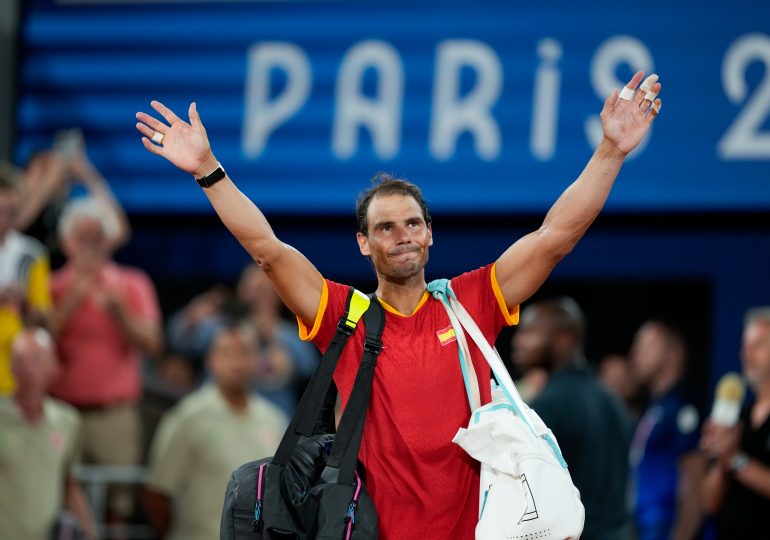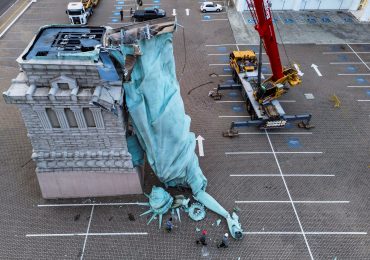A passage from the Rudyard Kipling poem “If” is written on the wall of the players’ entrance to Wimbledon’s Centre Court. “If you can meet with Triumph and Disaster and treat those two imposters both the same,” it reads. Competitors can glance at Kipling’s writing before they take to the London grass.
[time-brightcove not-tgx=”true”]
To American tennis legend Chris Evert, these words encapsulate the spirit of Rafael Nadal, the Spanish star who has spent the last two decades thrilling his legions of admirers around the world, but announced his impending retirement from tennis on Thursday.
“That’s him, to a T,” Evert tells TIME. Nadal did have a knack for swatting down on-court obstacles with muscle and grit: his snarl belied an inner calm that, more often than not, triumphed. “Have you ever seen him break a racquet?” says Evert. “Have you ever seen him scream and shout at his coaching box? If he lost, he would give compliments. He wouldn’t make excuses.” Of the three all-time men’s players who’ve dominated this era of the game—Nadal, Roger Federer and Novak Djokovic—Nadal seemed to be the most bashful of the three. He relished winning, but not the adoration. He exuded the most humility.
“In the sports world, there seems to be controversy and there seems to be anger, and it’s not always so nice,” says Evert. “He was like a bright light. He always brought order to the chaos. There will be a gaping hole.”
Nadal, 38, had been hinting at retirement all year. Injuries were taking their toll; he played in only one major, the French Open, in 2024, and lost in the first round of the tournament he’s won an incredible 14 times. He could have stuck around another year and received a send-off at each of the Slam tournaments one last time. But Nadal needed no pro forma retirement tour. Waving to the crowds and losing in the second round didn’t hold much appeal.
Instead, he’ll go out on his own terms: after the Davis Cup Final 8, held in Malaga, Spain, starting Nov. 19. Nadal will try to help his nation win the Davis Cup title for the fifth time in his illustrious career.
He’ll step aside with 22 major championship titles, good for second all-time on the men’s side; he trails only Djokovic, who owns 24. He’s unquestionably the greatest clay-court player of all-time: a Nadal statue was unveiled at Roland-Garros in Paris in 2021, while he was still competing in tournaments. He won his final major, at Roland-Garros, appropriately, a year later.
Evert won seven French Open titles herself. “I would pat myself on the back,” she says, “until Nadal came along.”
Patrick McEnroe, the ESPN commentator and former U.S. Davis Cup captain, remembers watching the 2019 French Open final from Roland-Garros: Nadal’s opponent, Dominic Thiem of Austria, was having a strong season, having won the Indian Wells tournament on hard court that year and also taken the Barcelona Open title on clay about a month before the French. But after they split the first two sets, Nadal crushed Thiem in the third and fourth, 6-1, 6-1. “For Thiem to win a point was like a monumental effort,” says McEnroe. “Nadal’s ability to take the ball on the rise, take it early, and also play that typical clay-court defensive kind of game—he could do everything. Nobody ever played this aggressively.”
Nadal won his first French Open in 2005, at the age of 19, while wearing white Capri pants. He then took the next three Roland-Garros titles, before casting aside any speculation he’d be a clay-only specialist with his unforgettable breakthrough at the 2008 Wimbledon final, when he took down Federer, who had won the previous five Wimbledon championships. Nadal won the five-set match, which was played out over nearly seven hours due to a pair of rain delays and concluded with darkness fast descending on Centre Court, 6-4, 6-4, 6-7 (5-7), 6-7 (8-10), 9-7. It was probably the greatest tennis match ever played. “That catapulted Nadal from being a great player to a legendary player,” says McEnroe. He’d go on to win another Wimbledon, in 2010, plus four U.S. Opens and a pair of Australian Opens on hard courts.
Nadal’s rivalry with Federer defined the game for years. Fans from places like the United States, Great Britain, and Australia looked past their own countrymen to pull for either the graceful Swiss artiste or the swashbuckling Spaniard. “They transcend the sport,” says Brad Gilbert, an ESPN analyst who has also coached stars like Andre Agassi, Andy Roddick, and most recently, Coco Gauff. “Fed has the biggest fan base in the history of tennis. Rafa maybe the second. They have massive fan bases outside their own countries. You don’t see that that much.”
And while Nadal toppled Federer at Wimbledon, where Federer has won a record eight titles, Federer never returned the favor in France. Nadal beat Federer all six times they met at Roland-Garros, including four finals (2006, 2007, 2008, 2011).
Nadal’s warrior mentality certainly stood out. But one shouldn’t overlook his singular ability to strike a tennis ball. “Nobody’s ever been able to match Nadal with the forehand topspin, shot after shot after shot, with the same consistency,” says McEnroe. “Nobody.” From the get-go, pundits fretted that the abandon with which Nadal played would wear out his body. “He was like a running back that sometimes took too much pounding,” says Gilbert. “Instead of going out of bounds, he was taking on tacklers.” Yes, injuries disrupted his career at times, and ultimately ended it. Still, few anticipated that he’d last this long, and win this much. He turned pro in 2001, at 15, and strung together a remarkable 23-year career that also included a pair of Olympic gold medals. “He would miss three months, four months with injuries, then every time he would come back, he’d never miss a beat,” says Gilbert.
At Nadal’s first French Open win, back in 2005 when he rocked long hair and a baby face, Gilbert told anyone who would listen he thought Nadal would win seven to ten French Opens. People thought Gilbert was nuts. But it turns out he—and so many others—sold short what Nadal could ultimately accomplish. Nadal exceeded all expectations, on and off the tennis court. While true tennis fans could feel Nadal’s retirement announcement coming, the void seems no less immense.
Leave a comment








